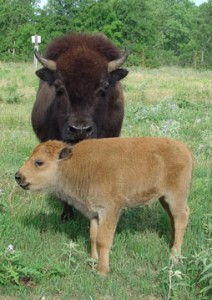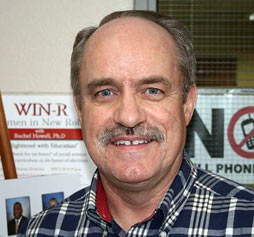By Katie Hudson-Martinez/feature editor

The deer and the antelope played in the sprawling prairie land of Fort Worth as recently as 150 years ago.
Grizzly bears, bobcats, bison, mountain lions, alligators and coyotes hunted white tail deer, armadillo, skunks, jackrabbits and opossums through dense forests and prairies that have since been cleared for the development of neighborhoods and shopping centers.
These days it is rare to see a wild animal in its natural habitat around Fort Worth, but if you visit one of Fort Worth’s little-known public parks, you may be able to do just that.
The Fort Worth Nature Center and Refuge is one of the largest in the United States with 3,621 acre wilderness dedicated to the preservation of indigenous Texas wildlife and their natural habitat.
“Just about the only indigenous Texas animals you won’t see at the refuge are bears,” Suzanne Tuttle, park manager, said.
Using the 20 miles of hiking trails throughout the park can bring guests into proximity of a healthy population of deer, prairie dogs, armadillos and scores of wildlife in a non zoo-like setting.
The park is home to more than 80 species of reptiles, everything from the American alligator to the green anole lizard, including several species of venomous snakes.
The nature center promotes co-existence with all wildlife and provides an educational experience with the Dallas-Fort Worth Herpetological Society on how to identify venomous snakes.

“All snakes are beneficial and have a distinct place in our ecosystem. We need to learn to coexist better with animals that really do belong here,” Tuttle said.
The refuge does outreach to churches and schools and offers wildlife-education in the form of summer classes, guided hikes and canoe trips and presentations inside the Hardwicke Interpretive Center.
Since the land was first designated as a wildlife refuge in 1964, the park has relied on a combination of government grants and public donations to fund staffing and maintain the facilities.
The park has a limited number of paid employees and depends on volunteers to assist in the day-to-day operations, such as care of the enclosed animals and naturalist assistants.
Donations have recently provided the refuge with an all-terrain vehicle, some tractors and equipment needed for some of the planned improvements to the park.
According to the five-year master plan proposed for the refuge in 2003, some ambitious improvements are in the works, including restoration of some of the picnic areas, which date back to the 1930s, as well as the construction of a new Lone Point Visitors Center with panoramic views of the park and lake access.
The center would house both permanent and temporary exhibits, a library, auditorium, gift shop, observation deck and a new canoe launch boat dock.

Also within a remote area of the park is an abandoned SWAT team shooting range and bomb disposal area that the refuge staff hopes can someday be moved to a more suitable location.
Tuttle believes in everything the Nature Center has to offer and has dedicated her life to its preservation.
“People are still creatures of nature, and it is good for their mental health to become more in tune with wildlife and natural habitat,” she said. “Plus, all this green space is generating oxygen and creating a natural filter of water to the water shed—it is difficult to put a value on things like that.”
Tuttle said that based on current population growth projections, in the next decade the refuge will become Fort Worth’s equivalent of Central Park in New York, an oasis in the center of a bustling metropolis.
“ I see the center as a gift from some of our city’s founding fathers,” she said. “We should take care of it and appreciate the value of this wonderful opportunity of true preservation.”































